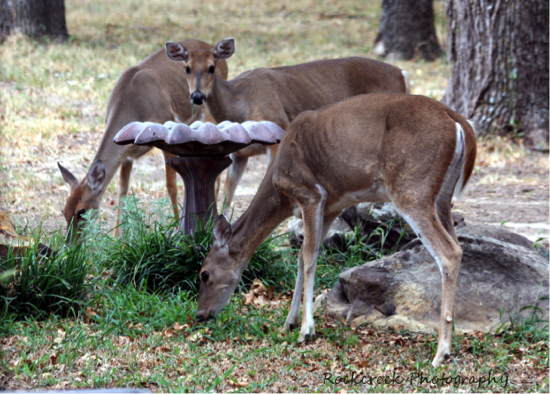
Photo: Sheila Brown
The ongoing Texas drought has thrown nature out of balance and has had a devastating impact on wildlife, especially aquatic and bird species. The majority of Texas lakes are extremely low or have dried up completely. According to the 2012 Texas State Water Plan, about 40% of our water supplies today in Texas are drawn from lakes. All of the lakes in Texas are water reservoirs from dams built on rivers and streams.
During the severe 2011 drought, lakes dropped nearly three feet per year in east Texas and almost seven feet per year in west central and north central Texas due to evaporation alone.
The dried up lakes are having a significant impact on the aquatic habitats and wildlife of Texas. The lakes that usually supply food and water to the birds on their migration paths are severely reduced, which has created a serious problem. Birds now have to find new migratory routes that include food and water sources and some birds do not have the energy to find new sources.
The decreased flows in rivers and streams and depleted major reservoirs across Texas are changing the fish population and even threatening the survival of some rare fish. Low or no stream flows cause a loss of habitat, degraded water quality, and increased saltwater intruding into fresh water. Marine fish are moving into Texas rivers with increased salinity. Texas ranks among the most biologically diverse states in the country. According to Water Resources Branch chief Cindy Loeffler, “approximately 40% of Texas fishes are now already extinct or risk regional or even global extinction.” As of right now Texas ranks in the top five states for the number of endangered aquatic species and if the drought persists, the situation could worsen.
The drought has also led to lower plant growth, which affects insect populations. Low insect populations will lower seed production, and animals that rely on seeds and plants for nutrition – from birds to deer and antelope – will in turn have lower rates of reproduction. Predators that rely on those animals as a food source remain hungry as well, and will reproduce less. The drought causes a domino effect that will impact the ecosystem of Texas for years to come.
The severity and persistence of the drought has taken a toll on Texas and is the clearest example that current drought contingency plans are not enough to address our water challenges and to initiate proper responses. Texas needs increased water conservation efforts, especially with its fast growing population. The current state water plan envisions nearly a quarter of Texas’ future water supplies will come from conservation. If Texas’ water plan doesn’t become more progressive, the state’s water supply will become an even more serious issue.
Nikki Whitehead is a media and communications intern at the Sierra Club's Lone Star Chapter.